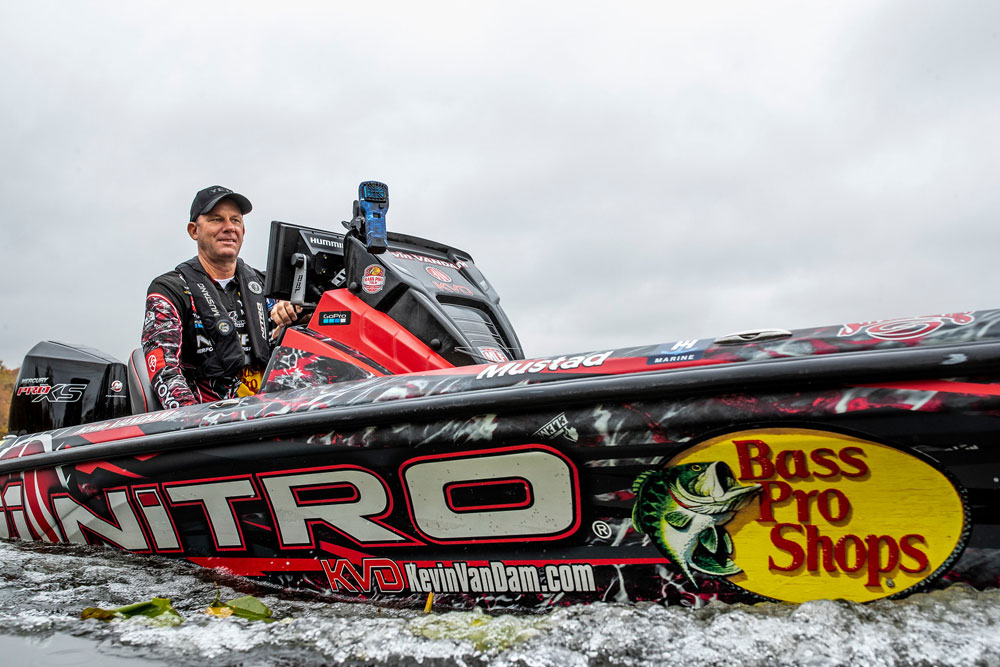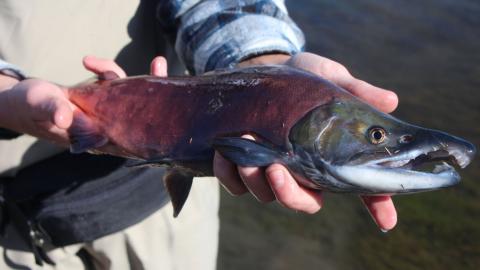provided by John E. Phillips
Mossy Oak Fishing Pro Kevin VanDam of Kalamazoo, Michigan, is the only professional fisherman to win four Bassmaster Classics and three Major League Fishing cups. Kevin’s one of the fastest fishermen finding and catching bass in every tournament he attends. He’s a very detailed angler and a keen observer of everything around him when he’s on the water. Sights and signals that most bass fishermen completely overlook are some of the keys to VanDam’s success. Mossy Oak wanted to know how VanDam finds and catches bass during a time of the year where many lakes will contain pre-spawn, spawning and post-spawn bass.
If there are still a few bass spawning, but you’ve decided a majority of bass have moved out of the spawning flats, where do those bass go, and how do you catch them?
VanDam: One of the things that happens after the spawn is that the bluegills and the shad start spawning. I’ll be looking for bluegill beds with my Hummingbird Mega 360 Depth Finder. On the depth finder, bluegill beds often look like a waffle on the bottom. Or, I’ll look in shallow water, if the water’s clear enough, and try and spot the bluegill beds. I know the post-spawn bass are looking for bluegills to eat. The other thing that tells me where the post-spawn bass are is the birds. The shad spawn usually takes place at night, but early in the morning, right at first light, you’ll often see large flocks of birds around a marina dock, riprap, a bridge or a clay bank - diving on shad.
Since the shad spawn usually takes place when the water temperature is around 70 degrees, I understand the post-spawn bass will be moving to these areas where the shad are spawning. They can eat a lot of shad in a short time. The shad are free spawners, and by that I mean a bunch of them will get together and put their eggs on structures like a floating dock, a piece of wood or a rock on the back. So, I want to use a lure that looks like a shad and is the color of a shad, but that you also can fish around the type of cover on which the shad are spawning. I often prefer a white swim jig, a white spinner bait, a bone or a white-colored top-water lure or a buzzbait. I can take a swim jig and skip it around rocks or floating docks and be very efficient with it, but I won’t be as efficient throwing a spinner bait into a marina dock.
How will you catch those post-spawn bass around bluegill beds?

VanDam: If the water is clear, and I can see the bluegill beds, I like to cast a popping bait or a stick bait like the Strike King Sexy Dawg. Big post-spawn bait love to eat bluegills because they are big bait. Bass don’t have to expend as much energy to eat a big bait like a spawning bluegill as they will to chase a shad or another bluegill not holding on the bed. In an area with a large group of bluegill beds, bass can eat lots of bluegills in a short time.
If these bass don’t want a top-water lure, I’ll fish a wacky-rigged worm and/or a dropshot worm. The wacky worm and the dropshot worm are especially effective when I can’t see the bluegill beds but have found them on my depth finder. Even a jig is a productive lure to fish around bluegill beds that you can’t see.
Out of all those lures, the wacky head is my favorite. I’ll usually fish a green-pumpkin worm and dip its tail in chartreuse dye. If I’m fishing a jig, I’ll use a green-pumpkin jig and dip the tail of its skirt in chartreuse dye. With a green-pumpkin soft plastic craw, I’ll use a 1/8-ounce wacky jig because the bluegills aren’t usually very deep. I like a 5” Fat Baby finesse worm made by Strike King because I’ve caught a lot of bass using that soft plastic on a shaky head fished around bluegill beds. Most people only think of bluegill beds in shallow water, but when I’m fishing a deep, clear lake, I’ve found bluegill beds as deep as 15-20 feet. If the beds are that deep, I’ll use a heavier jig head to get my worms down to the bass.




























